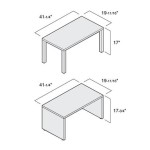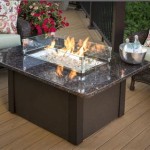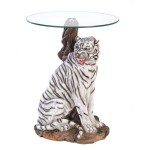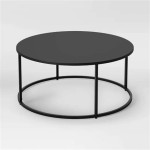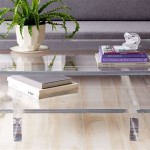How to Make a Table Runner for Beginners
A table runner is a decorative strip of fabric that is placed on a table, often running lengthwise down the center. It serves as an accent piece, adding visual interest and protecting the table from scratches and spills. Making a table runner is a relatively simple sewing project, even for beginners. This article outlines the steps involved in creating a basic table runner, providing clear instructions to guide individuals with little to no sewing experience.
The process involves selecting fabric, measuring and cutting it to the desired dimensions, and then sewing the edges to create a finished look. While variations exist, the foundational skills remain constant. This guide focuses on a straight-edged, rectangular table runner, allowing for mastery of fundamental sewing techniques before attempting more complex shapes or embellishments.
Choosing the Right Fabric and Supplies
The first step in making a table runner involves selecting appropriate fabric. Consider the existing decor of the room and the intended use of the runner. Durable fabrics like cotton, linen, or blends are commonly used for everyday table runners. For more formal settings, fabrics such as silk, satin, or damask can be chosen. The weight of the fabric also matters; lighter fabrics drape more elegantly but may require interfacing for added body, while heavier fabrics are more resilient but can be more challenging to sew.
Beyond the main fabric, additional supplies are necessary. Matching thread is essential for sewing the edges. A rotary cutter, cutting mat, and quilting ruler facilitate accurate and efficient fabric cutting. Scissors can be used as an alternative but may result in less precise cuts. A sewing machine is the primary tool for stitching the fabric, and it should be threaded correctly with a new needle appropriate for the chosen fabric type. An iron and ironing board are crucial for pressing the fabric to remove wrinkles and create crisp seams. Pins are used to hold the fabric layers together during sewing, and a seam ripper is a useful tool for correcting any stitching errors.
Interfacing is an optional but often beneficial material. It’s a layer of fabric placed between the main fabric and the lining to add stability and structure. This is especially useful for lighter fabrics or when a more defined shape is desired for the table runner. Fusible interfacing is a convenient option as it can be ironed onto the fabric, simplifying the application process.
Measuring and Cutting the Fabric
Accurate measurements are critical for a well-proportioned table runner. Begin by measuring the length and width of the table. The table runner should be shorter than the table, with an overhang on each end. A general rule of thumb is to have an overhang of 6 to 12 inches on each side, but personal preference dictates the final length. For example, if the table is 60 inches long, a table runner between 72 and 84 inches long would provide a suitable overhang.
Determine the desired width of the table runner. Common widths range from 12 to 18 inches. Wider runners can create a more dramatic statement, while narrower runners are more subtle. Once the dimensions are determined, add seam allowances to each side of the fabric. A standard seam allowance of 1/2 inch is sufficient for most projects. This means adding 1 inch to both the length and width measurements to account for the fabric that will be folded and sewn to create the finished edges.
Using the rotary cutter, cutting mat, and quilting ruler, carefully cut the fabric to the calculated dimensions. Ensure the fabric is placed on a flat surface to prevent distortion. If using scissors, draw lines with a fabric marker or tailor's chalk to guide the cutting process. Precision in cutting ensures that the finished table runner will be straight and evenly sized. If using two different fabrics for the front and back of the runner, cut both pieces to the same dimensions.
Sewing the Table Runner
With the fabric cut to size, the next step involves sewing the edges to create a finished seam. Pin the two fabric pieces together, right sides facing each other. This means that the patterned or finished sides of the fabric should be facing inward, while the wrong sides are visible. Align the edges carefully and secure them with pins, spacing the pins approximately every 2 to 3 inches. This prevents the fabric from shifting during sewing.
Using the sewing machine, stitch around the perimeter of the table runner, using the predetermined seam allowance of 1/2 inch. Leave a gap of approximately 4 to 6 inches on one of the shorter sides. This gap will be used to turn the table runner right side out after sewing. Backstitch at the beginning and end of the stitching line to secure the seam and prevent unraveling. Remove the pins as the fabric is sewn, ensuring that the needle does not hit the pins.
After sewing, trim the corners of the fabric diagonally, being careful not to cut into the stitching. This reduces bulk in the corners and allows for sharper, cleaner corners when the table runner is turned right side out. Turn the table runner right side out through the opening that was left unstitched. Use a point turner or a blunt object to gently push out the corners, ensuring they are fully formed and free of wrinkles.
Once the table runner is right side out, press it with an iron. This step is crucial for creating crisp, professional-looking edges. Fold the edges of the opening inward by 1/2 inch and press them in place. Pin the opening closed, aligning the folded edges. Stitch the opening closed using a blind stitch or a straight stitch, keeping the stitching close to the edge of the fabric. Remove the pins and give the table runner a final pressing. The table runner is now complete and ready to be used.
Various embellishments can be added to the table runner to customize its appearance. Decorative stitching along the edges, such as a zig-zag stitch or a scalloped edge, can add visual interest. Appliqués, such as fabric flowers or geometric shapes, can be sewn onto the surface of the runner. Embroidery can be used to create intricate designs or monograms. Adding tassels or fringe to the ends of the runner can provide a decorative touch. The possibilities are endless, and the choice of embellishments depends on personal taste and the desired aesthetic.

How To Make A Reversible Table Runner For Beginners

Beginners Table Runner Very Detailed Instructions

How To Make A Table Runner Sew Much Ado

How To Make A Table Runner Sew Much Ado

How To Sew A Table Runner Heather Handmade

How To Make An Easy Table Runner

How To Make A Farmhouse Table Runner Well Purposed Woman

One Hour Version Of The 10 Minute Table Runner Super Mom No Cape

How To Make A Table Runner Beginner Sewing Tutorial Create Whimsy

How To Make A Table Runner Sew Much Ado
Related Posts

